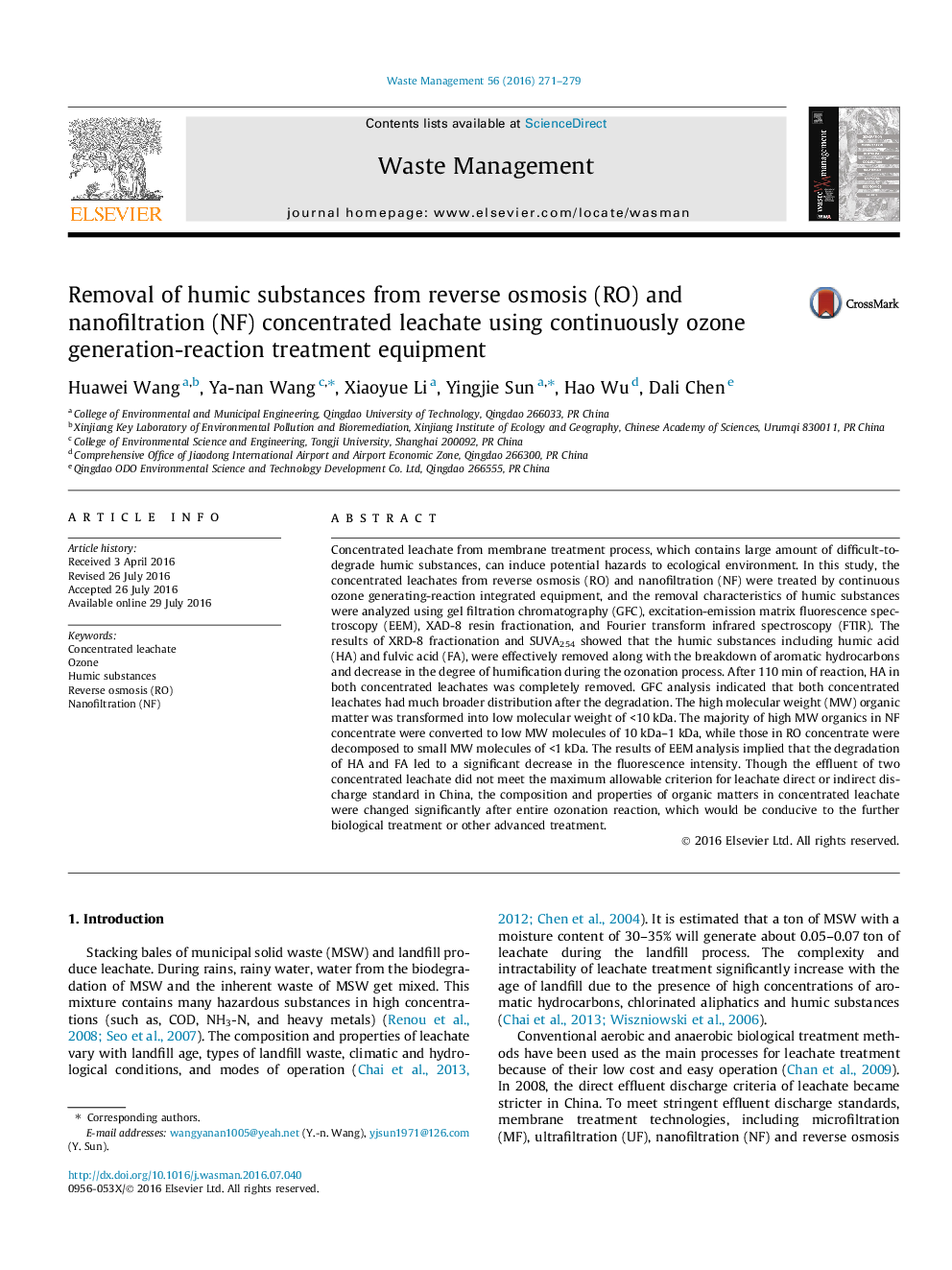| کد مقاله | کد نشریه | سال انتشار | مقاله انگلیسی | نسخه تمام متن |
|---|---|---|---|---|
| 4471137 | 1622630 | 2016 | 9 صفحه PDF | دانلود رایگان |
• Humic substances in concentrated leachate were effectively removed by ozone process.
• After 110 min of reaction, HA was completely removed.
• Humic substances degradation led to significantly decrease in fluorescence intensity.
• High molecular of humic substances were converted to small MW with <10 kDa.
Concentrated leachate from membrane treatment process, which contains large amount of difficult-to-degrade humic substances, can induce potential hazards to ecological environment. In this study, the concentrated leachates from reverse osmosis (RO) and nanofiltration (NF) were treated by continuous ozone generating-reaction integrated equipment, and the removal characteristics of humic substances were analyzed using gel filtration chromatography (GFC), excitation-emission matrix fluorescence spectroscopy (EEM), XAD-8 resin fractionation, and Fourier transform infrared spectroscopy (FTIR). The results of XRD-8 fractionation and SUVA254 showed that the humic substances including humic acid (HA) and fulvic acid (FA), were effectively removed along with the breakdown of aromatic hydrocarbons and decrease in the degree of humification during the ozonation process. After 110 min of reaction, HA in both concentrated leachates was completely removed. GFC analysis indicated that both concentrated leachates had much broader distribution after the degradation. The high molecular weight (MW) organic matter was transformed into low molecular weight of <10 kDa. The majority of high MW organics in NF concentrate were converted to low MW molecules of 10 kDa–1 kDa, while those in RO concentrate were decomposed to small MW molecules of <1 kDa. The results of EEM analysis implied that the degradation of HA and FA led to a significant decrease in the fluorescence intensity. Though the effluent of two concentrated leachate did not meet the maximum allowable criterion for leachate direct or indirect discharge standard in China, the composition and properties of organic matters in concentrated leachate were changed significantly after entire ozonation reaction, which would be conducive to the further biological treatment or other advanced treatment.
Journal: Waste Management - Volume 56, October 2016, Pages 271–279
